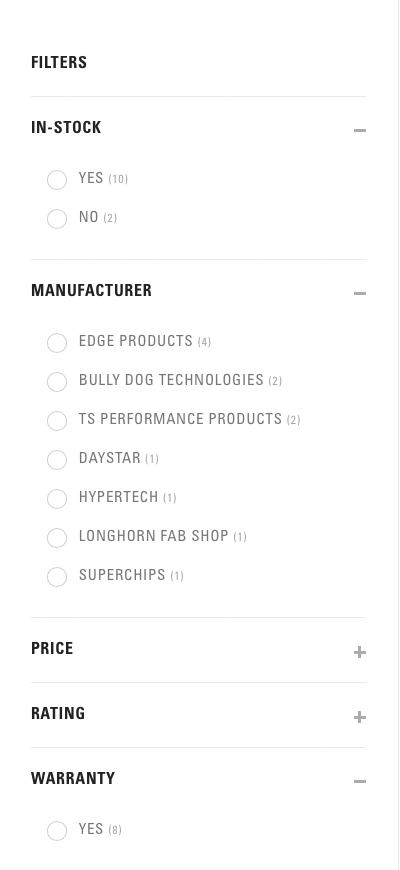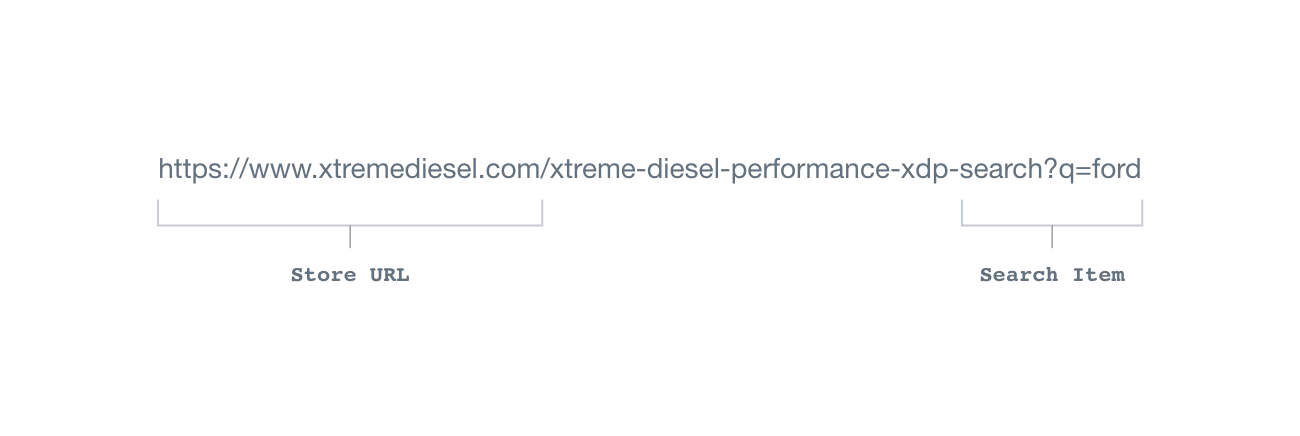
- Posted on
- • October 29, 2018

In case you haven’t heard, faceted search is awesome.
Even if you aren’t familiar with the term, you’ve probably come across faceted search and navigation before. It’s basically what online shoppers use to filter their search results by certain product criteria.
The Xtreme Diesel Performance online store is a great example of how effective faceted search can be. Say we’re shopping for our Ford truck. We search the model on their site…

…and get more results than we know what to do with. This is when faceted search comes in handy. Using the filters, we can run a faceted search defining exactly what we need:

Once that search is run, we’ll see only the products we’re looking for.
The Danger of Using Faceted Navigation for eCommerce
Faceted search and navigation can be a game-changing tool for eCommerce stores, especially those that offer lot of complex and customizable products. Merchants should be careful, however, about how they set up their faceted navigation, as each faceted search result has its own unique URL:

As you can guess, this has the potential to get out of hand. An online seller with a high SKU count catalog can quickly find themselves with millions of pages housing every possible combination of product criteria. This can lead to page bloat, duplicate content, and confusing crawl paths…basically a recipe for an SEO disaster.
How to Set Up Faceted Search to Protect Your SEO
Faceted search isn’t an SEO problem in and of itself, but the pages required to make it work can be. The indexation and reputation issues associated with the kind of page bloat described above can lead to problems ranging from Google site penalties to lost search visibility. Applying best practices to your site’s faceted navigation can prevent future issues and resolve current problems. One such resolution saw a site’s traffic skyrocket after optimizing its faceted search setup.
There are several ways to keep your store optimized and crawlable while using faceted search. SEO thought leaders have suggested quite a few best practices for faceted navigation, but what’s best for your site depends on a number of important factors. Be sure to do your research and take your development resources into account before implementing any new faceted search SEO changes.
Final Thoughts
Even with these potential SEO complications, most eCommerce stores that use faceted navigation have far less to worry about than those that don’t. Online shoppers have grown accustomed to faceted search functionality and may be less inclined to do business with a store that doesn’t help them find exactly what they’re looking for. With the right setup, this essential functionality is often vital to a store’s success.

![11+ Best Online Course Platforms of 2022 [Tried & Tested]](https://thegateway.net.au/wp-content/uploads/2022/03/11-best-online-course-platforms-of-2022-tried-tested-768x402.png)




